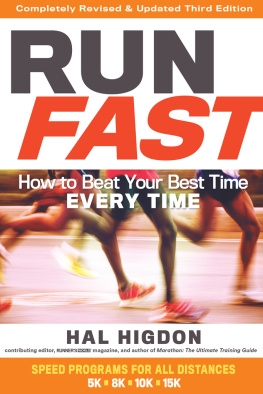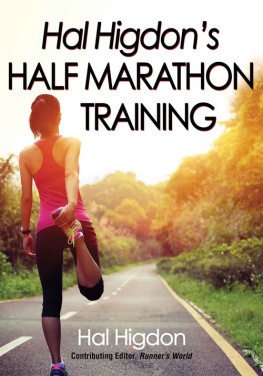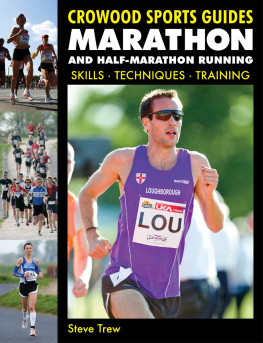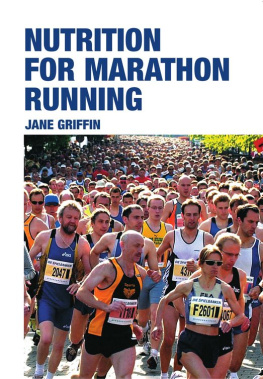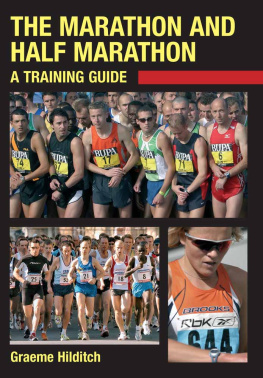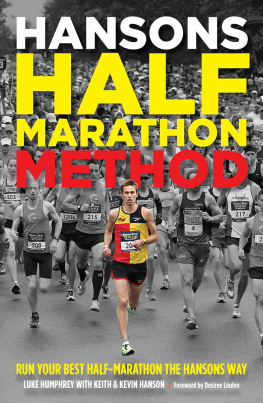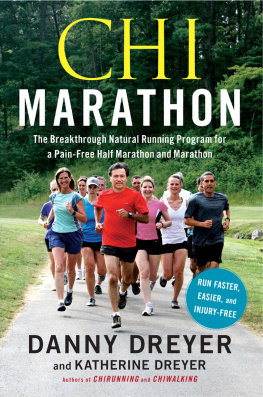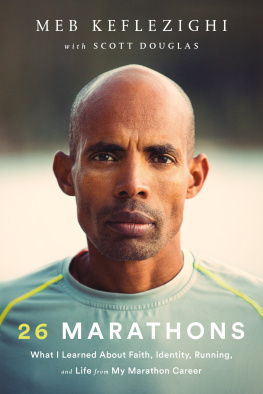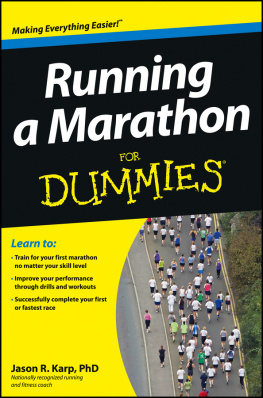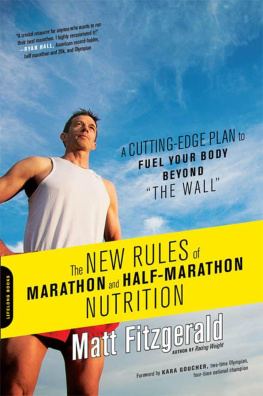
For my life partner, Rose
CONTENTS
WARMUP
Marathoning offers a gateway to a brave new running world
What would we do for fun if the Persians had won the Battle of Marathon? This thought occurred to me while I was in Greece recently to celebrate the 2,500th anniversary of that battleand the legendary run from Marathon to Athens by Pheidippides, who announced, Rejoice, we conquer! and immediately died.
That legendand it is more legend than historical factinspired a race in 1896 at the first modern Olympic Games over approximately the same route. Only 17 runners participated in that first race. In 2010, 20,000 runners appeared for the 2,500th anniversary celebration. By then, similarly long races with that many runners and more had become common throughout the world in Berlin and London and New York and Boston and Chicago and elsewhere. Races that, by the way, are called marathons, that term having conveniently taken hold as a description of a running race 26 miles 385 yards long.
In 1993, Rodale Press published the first edition of the book you now hold in your hands, Marathon: The Ultimate Training Guide. The book featured a red cover with a photograph of a dozen or so elite men (no women) charging off the starting line.
A half-dozen years later, in 1999, the book had sold enough copies and the sport had changed sufficiently to justify an updated second edition. Its white cover featured a number of midpack runners crossing the line in the New York City Marathon, one of them an Italian pop-music singer, Johnny Paoli. (Believe it or not, Rodales photo editors did not know the runners identity when they selected the shot.)
By 2005, Marathon: The Ultimate Training Guide had established itself as one of the best-selling books for runners training for marathons. More changes in the sport justified a third edition. Its red-and-white cover showed a pastiche of runners, slow and fast, including Svetlana Zakharova of Russia winning the prestigious Boston Marathon. Yes, the sport had come a long way from the fast men on the cover of the first edition to the fast woman on the cover of the third.
Marathon: The Ultimate Training Guide established itself as one of the best-selling books for runners training for marathons.
The focus of each of those editions shifted somewhat as the sport shifted. I gathered much of the information for the first edition from questionnaires sent to marathon coaches and follow-up interviews with those same individuals. Indeed, the cover featured the subtitle Strategies from 50 Top Coaches.
By the time of the second edition, I had become more involved in coaching midpack runners myself, serving both as training consultant for the Chicago Marathon and coach for the Chicago Area Runners Association (CARA) Marathon Training Program, which had grown to 2,000 participants.
As we moved into the new millennium, I shifted my attention to providing training programs and answering questions for runners online, both on my popular Web site, halhigdon.com, and on my Virtual Training Bulletin Boards. The third edition featured quotes and stories from and about members of my online V-Team.
All three of these groupscoaches, in-person runners, and online runnersprovided a research base for this fourth edition. More and more of my involvement with runners lately has been through the Internet; over the years, my Web site has attracted more than five million viewers. Halhigdon.com ranks among the top 20 most viewed running sites both in the United States. (13th) and in the world (17th). But Im not alone in providing useful information to runners. Google the words marathon training (as I just did) and you will encounter 1,170,000 links. May I proudly state that the top link in that search is to my Web site. Google half-marathon training and I also own the top link for that increasingly popular distance.
Admittedly, not every search for marathon training help will lead you to useful advicethus the purpose of this fourth edition: to serve as a gateway for those seeking to conquer the 26 miles 385 yards of the marathon; also, to recognize that the sport has experienced another major change in the half-dozen years since the third edition.
For one thing, more and more women are running, outnumbering men in more and more marathons and half-marathons. Several marathons now serve women-only fields. Should women train differently than men? I might have answered no a half dozen years ago. Im less sure of myself now.
Google the words marathon training and you will encounter 1,170,000 links.
Marathons have become both more expensive and more difficult to enter. The Boston Marathon filled its 2011 field in 8 hours 3 minutes after opening for registration online. While big city marathons with their 40,000-runner fields often are more fun than smaller races, not everybody enjoys being slowed by crowdsparticularly when it comes time to achieve an elusive Boston qualifier (BQ). Charities continue to attract large numbers to the sport, but charity running lately has suffered some stress faults, which may need to be mended.
We also have more gadgetseverything from GPS watches to heart monitors to map-tracking devices. I recently recorded an app for a half-marathon training program of mine that you can download onto your iPhone.
Speaking of half-marathons, these 13.1-mile events are growing even faster than marathons. More and more new runners now use half-marathons as stepping stones to their first full marathon. And more and more experienced runners now step back into half-marathons, allowing them to maintain their involvement in the sport without always going the full 26.2-mile distance. At events such as Disney World (Orlando) and Grandmas (Duluth, Minnesota), the accompanying half-marathon sells out more quickly than the full.
Frequently in recent years, runners stopping by my booth at expos have picked this book off the table and asked, Can this book be used for half-marathons, too? Yes, decidedly so, even if 13.1 miles is the farthest you ever plan to run. (But let me warn you that after finishing your first half, you may change your mind about future racing plans.)
All this has happened since the publication of the third edition of Marathon: The Ultimate Training Guide in 2005. I am happy to offer you this fourth edition as reflecting the sport as it exists today. I want to show you the way to a comfortable finish if you are running your first marathon or to an improved performance if youve already gone the distance. Please join me on the starting line.
Hal Higdon, Long Beach, Indiana
THE MYSTIQUE OF THE MARATHON
Running 26 miles 385 yards can be a humbling experience
The woman stood crying before my booth at the Chicago Marathon Expo. She could not talk. She made a few hand gestures in an attempt to cover her embarrassment but still failed to stem the flow of tears. I smiledtolerantly. I told her to relax. I knew the reason for her emotional breakdown.
The next day, she would run 26 miles 385 yards!
Some runners shed tears crossing the finish line. I did this once myself after finishing fifth (first American) at the Boston Marathon in a time so fast I knew I never again would come close to duplicating it, because never again would I be able to summon the will to train as hard as I had for that one peak performance. The marathon can humble you, Bill Rodgers, who won the Boston and New York City marathons four times each, once said. Boston Billy meant that sometimes even the best runners crash for reasons not easily explainable to family or friendsor themselves. It happened to him in the middle of that span of victories, when he failed to finish one year at Boston after running in the lead much of the way. But the marathon can humble you in many ways. The classic long-distance race can expose all your nerve endings and bring you closer to recognizing the real you, all flaws and virtues on the surface. Whether or not the woman standing before my booth realized that fact, she was displaying a humbling emotion not uncommon among marathoners. It is just that some of us (men mostly) are more adept at hiding our emotions.


